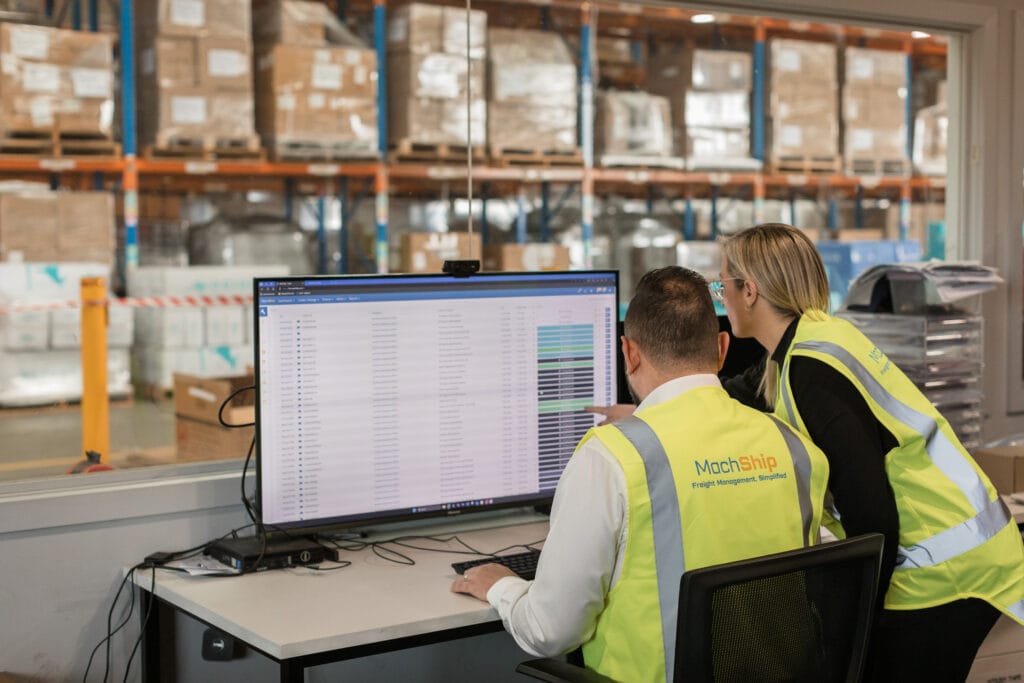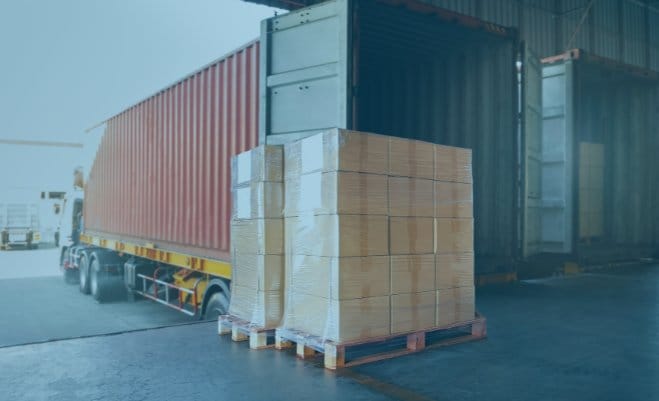Every logistics team feels the squeeze. Rising carrier costs, tighter delivery windows, and increasing order volumes have made it more difficult and costly to keep freight moving smoothly. However, one of the simplest ways to manage expenses often goes unnoticed: freight consolidation.
If your business dispatches multiple orders to the same customer or location each day, you might be paying more than you need to. Each consignment has its own base fee, which means that separate bookings to the same destination are costing you twice, or more, for the same trip. When you multiply that across hundreds of shipments, the hidden costs build up quickly.
That’s where automation changes the game. MachShip’s freight consolidation uses technology to detect when orders share the same sender, receiver, and carrier, then automatically combines them into one shipment. This leads to fewer consignments, less paperwork, and notable savings without compromising service or visibility.
The Challenge: Missed Savings Hiding in Plain Sight
For most freight teams, it is not the big mistakes that increase costs, but the small inefficiencies that occur daily. One common issue is sending multiple shipments to the same destination without recognising it.
In many operations, different departments book freight separately or there is no simple way to identify when orders could be combined. Without a system to recognise those patterns, separate consignments are created for deliveries that could have travelled together. Each one attracts its own base charge and paperwork.
These small charges add up fast. Over a month or a year, they can create a significant gap between what a business should be spending and what it actually pays.
We often see businesses wasting thousands of dollars a year on duplicate consignments without realising it - that's multiple consignments going to the same customer, on the same truck, but on a different connote. This is a simple change that uncovers those savings overnight, with zero impact on the receiver - only the bill you receive from the carrier.
James Jackson, Head of Client Integrations
Manual processes also make it difficult to measure the full impact. When freight is booked across different systems, it becomes harder to see where the spend is going or how often duplicates happen. Without that visibility, teams end up reacting to costs instead of preventing them.
What Freight Consolidation Actually Means (And How it Works)
Freight consolidation involves combining multiple consignments with the same sender, receiver and carrier into a single shipment. It removes unnecessary duplication in bookings, paperwork, and base charges, resulting in a more streamlined and efficient freight process.
In practical terms, it means that if multiple orders are scheduled to leave the same warehouse for the same customer on the same day, they are automatically combined before the manifest is prepared. The carrier collects one shipment instead of several, and your business pays a single base charge instead of many.
Modern platforms make this possible in real time. MachShip processes order data as it is generated, detects when consignments can be merged, and creates a single, precise record for dispatch. This not only reduces costs but also enhances visibility and data accuracy across every shipment.

The Measurable Impact of Automation
The benefit of consolidation becomes clear when you look at the numbers. Each base charge avoided represents a direct saving, and when this happens hundreds or thousands of times a year, the savings become significant.
For one MachShip customer, automated consolidation has saved around $250,000 annually. This was achieved simply by eliminating duplicate consignments that were previously billed as separate shipments. These are not unusual results. Across high-volume operations, even a small cut in basic charges or manual processing can significantly improve margins.
The impact goes beyond just costs. Fewer consignments lead to fewer invoices to reconcile, reducing data errors and speeding up reporting cycles. Having consolidated data also provides leaders with clearer insights into total freight activity, which supports better forecasting and more favourable carrier negotiations.
It is not just about reducing freight spend. When consolidation is automated, customers gain more accurate data, fewer tracking issues and can make smarter commercial decisions.
James Jackson, Head of Client Integrations
When you combine cost efficiency with data accuracy, consolidation becomes more than just a transport activity. It turns into a vital element of how effectively a business manages its overall freight performance.
How to Identify Your Own Consolidation Opportunities
Consolidation opportunities exist in nearly every freight operation, but the key is recognising where to find them.
Start by reviewing your recent dispatch data. Look for patterns where multiple consignments have been sent to the same location on the same day. Even minor overlaps, such as a few duplicate trips each week, can lead to substantial savings when automated.
If your warehouse, customer service and e-commerce systems all feed orders separately into your freight process, that’s another signal. Separate systems often lead to duplicate bookings because no one has visibility of the full picture.
You can also review carrier invoices for recurring base charges to the same address. These are the simplest savings, and automation can remove them immediately.
Most businesses discover that once consolidation is activated, results appear quickly. Savings build up, administration time reduces, and reporting becomes more reliable – all without altering the way orders are fulfilled.
Smarter Freight Management Starts with Visibility
Freight consolidation is one of those quiet efficiencies that quickly proves its value. It cuts costs, streamlines admin, and gives every team (from dispatch to finance) clearer insight into what is really happening across the freight network.
For many businesses, it is the first step towards a more automated and intelligent approach to freight management. When your system can recognise and combine shipments automatically, it not only saves money, it also lays the groundwork for a smoother, data-driven operation.
If you are ready to see how much your business could save through smarter consolidation, book a demo with the MachShip team and experience automatic efficiency in action.

